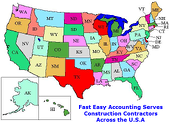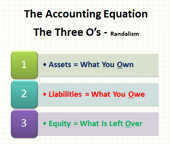As a contractor, you’ve likely had this experience: you deliver a job estimate to a client, they accept, and you get to work. Everything goes smoothly—until halfway through the project when the client says, “Wait, I thought this included the backsplash,” or “I assumed cleanup was part of the price.”
Suddenly, what you thought was a straightforward project turns into a debate about expectations. The client feels misled, you feel frustrated, and worst of all, your profit margin starts to shrink.
The root problem? The estimate wasn’t clear enough.
In construction, your estimate is more than just a number—it’s a roadmap. It tells your client what’s included, what’s not, and sets the financial foundation for your project. A vague or rushed estimate leads to misunderstandings, disputes, and, most importantly, lost profits.
As construction bookkeeping specialists, we’ve seen time and again that contractors who take the time to create precise, detailed estimates consistently run more profitable jobs. Let’s break down why your bids should spell everything out, and how doing so protects your bottom line.

When your estimate is unclear, three things happen:
1. Scope Creep Becomes Inevitable
If you don’t define exactly what’s included, clients will naturally assume more. Every “little” addition—a fixture change, extra paint coat, or a bit of demo—eats into your profit. Without a signed change order, you’re essentially doing free work.
2. Client Trust Erodes
A client who feels surprised by added charges won’t just be upset—they’ll question your integrity. Even if you’re being fair, unclear estimates make you look unprofessional.
3. Cash Flow Suffers
If you forget to include certain costs—like disposal fees, permits, or delivery—you’ll end up covering them out of pocket. Multiply that over several jobs, and suddenly your bank account feels tight, even though you’re “busy.”
A well-written estimate does more than avoid disputes; it also facilitates effective communication. It creates a foundation for profitability:
- Protects Your Profit Margin – By listing labor, materials, and extras, you ensure that nothing is forgotten and everything is accurately priced.
- Manages Client Expectations – Clients understand precisely what they’re getting and what they’re not. No surprises, no arguments.
- Improves Professional Reputation – A polished, detailed bid positions you as a contractor who runs a serious business. This often justifies higher pricing.
- Simplifies Bookkeeping & Job Costing – Clear estimates help you track actual vs. estimated costs, making future bids more accurate.
To protect your profit, your bids should cover more than just the basics. Here’s what to spell out:
Detail exactly what work will be performed. For example:
“Remove and replace 200 sq. ft. of flooring in the living room” is clearer than “Install flooring.”
List the materials included, specifying the grade or brand when possible. If clients want upgrades, they’ll know it costs more.
Break down labor separately from materials. This not only clarifies pricing but also helps if the client questions why the project costs what it does.
Provide an estimated start and completion date, along with notes on potential delays (e.g., permits, weather, client decisions).
Spell out what is not included. For example, disposal, electrical, or painting, if not part of your scope. This protects you from assumptions.
Include language like: “Any work not listed in this estimate will require a signed change order before proceeding.” This sets the expectation from the start.
Outline deposit requirements, progress payments, and final payment due dates. Clear payment terms support healthy cash flow.
Let’s say you bid on a bathroom remodel at $10,000. You wrote “install new tile floor” in your estimate. Halfway through, the client says they thought you were also retiling the shower walls. You now face a choice:
- Eat the cost and do it to keep the client happy (losing profit), or
- Argue that it wasn’t included (damaging the relationship).
If your estimate had said, “Install new tile floor, 200 sq. ft., client provides tile. Shower tile not included,” the expectation would be clear. Any additional work would require a signed change order. No profit lost.
From a bookkeeping standpoint, detailed estimates are gold. Why?
Because they give you a clear benchmark for job costing, you can compare what you estimated vs. what you actually spent on labor, materials, and subs. Over time, this data makes your bids sharper and your margins more reliable.
Without detailed estimates, your books become guesswork. You’ll never know which jobs are profitable and which ones are draining your resources.
- Use Templates – Don’t start from scratch each time. A standard estimate template ensures you never forget important details.
- Leverage Software – Even basic estimating tools or accounting software can help automate calculations and keep everything organized.
- Don’t Rush – Take the time to measure, calculate, and spell things out. A rushed estimate often leads to rushed profits.
- Review Before Sending – Double-check that labor, materials, and exclusions are listed clearly.
- Keep Copies – Always save a signed copy for your records.
In construction, profit isn’t just about how well you build—it’s about how well you plan. A clear estimate isn’t busywork; it’s a tool that protects your bottom line, manages client expectations, and sets you apart as a professional.
Every time you prepare a bid, ask yourself: If someone who knows nothing about construction read this, would they understand precisely what’s included and what’s not? If the answer is yes, you’re on the right track.
Remember: Clear estimates lead to clear profits. Don’t leave your success up to chance—spell it out, every time.
About The Author:
 Norhalma Verzosa is a Certified Construction Marketing Professional and serves as the Web Administrator of Fast Easy Accounting, located in Lynnwood, WA. She holds a Bachelor's Degree in Psychology and is a Certified Internet Web Professional, with certifications in Site Development Associate, Google AdWords Search Advertising, and HubSpot Academy. She manages the entire web presence of Fast Easy Accounting using a variety of SaaS tools, including HubSpot, Teachable, Shopify, and WordPress.
Norhalma Verzosa is a Certified Construction Marketing Professional and serves as the Web Administrator of Fast Easy Accounting, located in Lynnwood, WA. She holds a Bachelor's Degree in Psychology and is a Certified Internet Web Professional, with certifications in Site Development Associate, Google AdWords Search Advertising, and HubSpot Academy. She manages the entire web presence of Fast Easy Accounting using a variety of SaaS tools, including HubSpot, Teachable, Shopify, and WordPress.
OUTSOURCED ACCOUNTING FOR
THE BUSY CONTRACTOR
IN A MOBILE ENVIRONMENT
 |
 |
 |
 |
Download the Contractors APP today from the App Store or Android Store
Access Code: FEAHEROS
Click here to download the App on Android:
Click here to download the App on iOS:
Simply scan the QR code or search for ‘MyAccountants’ in the App Store and enter the Access code: FEAHEROS to utilize the powerful App features and capabilities and benefit from having our Construction Accounting App at your fingertips, 24/7."
PS: Even if you are not a Construction Contractor, you will find plenty of benefits in the app, so we invite you to download it, too! It's Free, so why not?




























